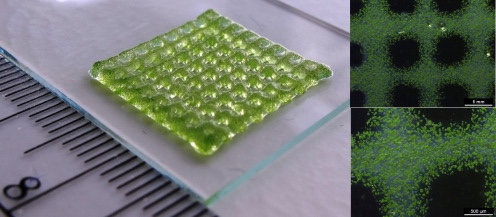Oxygen sensitive nanoparticles used for 3D printing of complex tissue-like structures

Researchers have implemented oxygen sensitive nanoparticles into a gel material that can be used for 3D printing of complex, biofilm and tissue-like structures…

An international team of researchers have implemented oxygen sensitive nanoparticles into a gel material that can be used for 3D printing of complex, biofilm and tissue-like structures harbouring living cells as well as built-in chemical sensors.
Professor Michael Kühl at the Department of Biology, University of Copenhagen explains: “3D printing is a widespread technique for producing the object in plastic, metal, and other abiotic materials. Likewise, living cells can be 3D printed in biocompatible gel materials (bio-inks) and such 3D bioprinting is a rapidly developing field, eg, in biomedical studies, where stem cells are cultivated in 3D printed constructs mimicking the complex structure of tissue and bones. Such attempts lack online monitoring of the metabolic activity of cells growing in bio-printed constructs; currently, such measurements largely rely on destructive sampling. We have developed a patent-pending solution to this problem.”
Continue reading on 3D printed constructs in drugtargetreview.com

